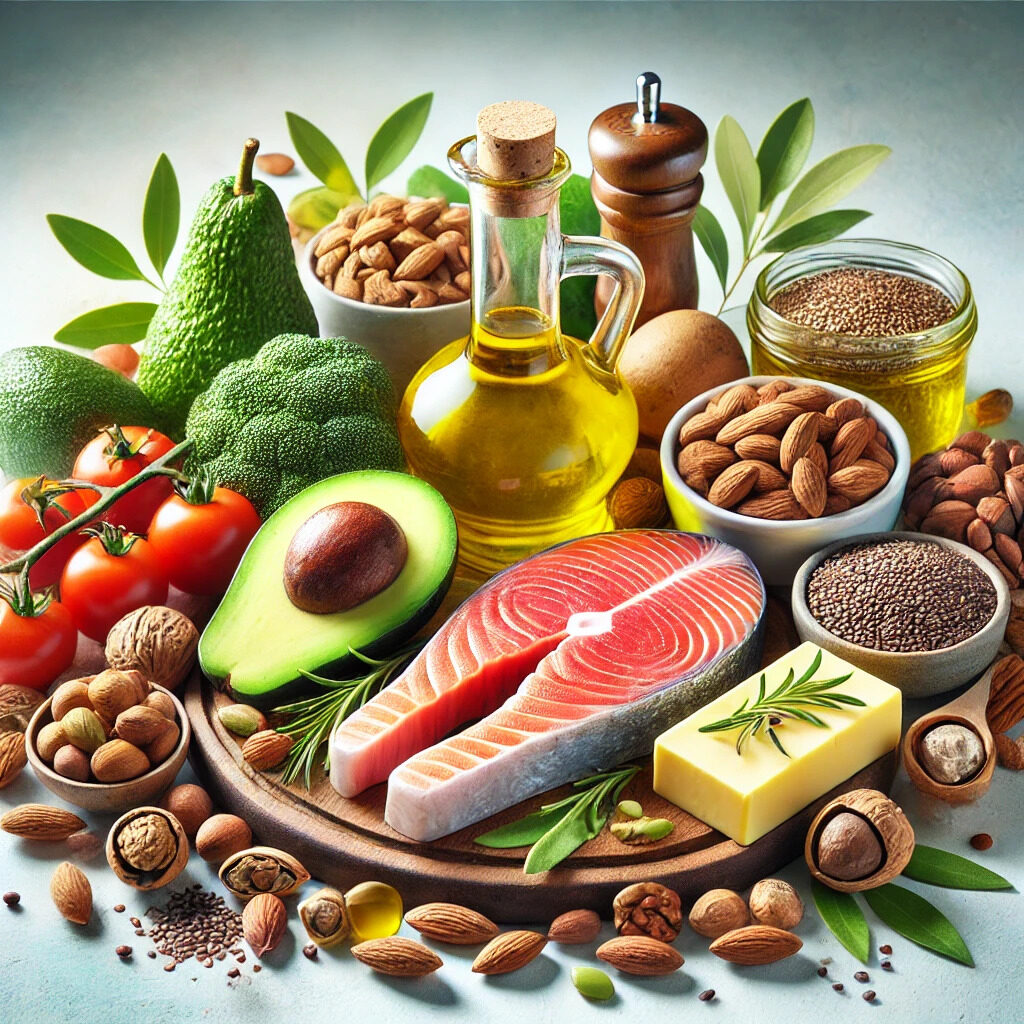What are macros (macronutrients)? Both macronutrients and micronutrients play a vital role in the body’s functioning, and balancing them correctly can make a significant difference in your overall health. Whether you’re aiming to lose weight, build muscle, or simply maintain a healthy lifestyle, understanding the role of macronutrients is crucial.
This blog will explain:
- What macronutrients are
- The different types of macronutrients
- Why they are important
- How to balance your macros for optimal health and performance
What are macros?
Macronutrients are the nutrients that our bodies need in larger quantities to provide energy and support bodily functions. Macros provide calories and include carbohydrates (4 calories per gram), proteins (4 calories per gram), and fats (9 calories per gram).
CARBOHYDRATES
Carbohydrates are the body’s primary source of energy. The carbohydrates you eat are broken down into glucose, which is used to fuel cells, tissues, and organs. Carbohydrates are important because they:
- Provide energy for daily activities and exercise.
- Help maintain proper brain function, as the brain relies heavily on glucose.
- Support digestive health, particularly when consuming fibre-rich complex carbohydrates.
Carbohydrates can be categorized into two groups:
Simple Carbohydrates:
Simple carbohydrates, also known as simple sugars, are made up of one or two sugar molecules. They are quickly digested and absorbed, providing a rapid source of energy. Examples of simple carbohydrates include sugary beverages such as soft drinks, fruit juices, energy drinks; sweets and desserts such as candy, chocolate, cookies, cakes, pastries, ice cream; sweeteners like sugar, honey, maple syrup, agave syrup and refined grains white bread, white rice and pasta made from refined flour (refined grains have been stripped of fibre and nutrients, causing them to act similarly to simple sugars in the body).
Dairy products such as milk, yogurt, and many cheeses contain lactose, a natural sugar. Even though fruits contain simple sugars, they also offer fibre, vitamins, and minerals, making them a healthier option than processed sweets. Whole fruits are preferable to processed forms like pureed fruits (e.g., applesauce) or fruit juices.
Complex Carbohydrates:
These are found in foods like whole grains, legumes, and vegetables. Complex carbohydrates are composed of longer chains of sugar molecules, which take more time to break down and digest compared to simple carbohydrates. This slower digestion process provides a steady release of energy, making them an important part of a balanced diet. Complex carbohydrates also tend to be rich in fibre, vitamins, and minerals, contributing to overall health.

There are two types of complex carbohydrates:
Starches:
These are found in grains, legumes, and starchy vegetables. Examples of starchy carbohydrates include potatoes, carrots, corn, rice, and breads.
Fibres:
These are found in plant-based foods and cannot be digested by the human body. The benefits of consuming sufficient fibre include promoting regularity, supporting gut health, weight management, blood glucose (sugar) control, heart health, and disease prevention, such as lowering the risk for some cancers and diabetes. Fibrous food examples include fruits, vegetables, whole grains, legumes, nuts, and seeds. Certain fibrous foods are also known as prebiotics as they “feed” the probiotics, the beneficial bacteria living in the gut, helping to maintain a healthy digestive system. Oats, barley, apples, asparagus, garlic, leeks, and onions are examples of prebiotic foods.
PROTEINS
Proteins are made up of amino acids and are essential for building and repairing tissues, making enzymes and hormones, and supporting immune function. They are important because they:
- Build and repair tissues, including muscles, hair, nails, skin, and organs.
- Produce enzymes and hormones that regulate bodily processes.
- Support immune health by forming antibodies.
Humans require 20 amino acids for protein synthesis. These are classified into essential and non-essential amino acids.
Essential amino acids cannot be synthesized by the body and must be obtained through diet. There are 9 essential amino acids, histidine, isoleucine, leucine, lysine, methionine, phenylalanine, threonine, tryptophan, and valine.
Non-Essential Amino Acids can be synthesized by the body and include, alanine, arginine,* asparagine, aspartic acid (aspartate), cysteine,* glutamic acid (glutamate), glutamine,* glycine,* proline,* serine and tyrosine.*
*While arginine, cysteine, glutamine, glycine, proline, and tyrosine are generally considered non-essential, they are sometimes classified as “conditionally essential.” This means they may become essential under certain conditions, such as illness or stress, when the body’s ability to synthesize them may be insufficient.

There are two types of proteins:
Complete Proteins: Complete proteins contain all nine essential amino acids and are typically found in animal products like meat, dairy, and eggs.
Incomplete Proteins: These lack one or more essential amino acids and are usually found in plant-based foods like beans, nuts, and grains.
You can mix incomplete protein sources to make complete proteins. By combining different incomplete protein sources, you can create a complete protein that provides all the essential amino acids your body needs. This concept is known as protein complementation.
Here are some examples of complementary proteins. Pairing these incomplete protein source foods can help provide all the necessary amino acids:
- Rice paired with beans or lentils: Rice is low in lysine but high in methionine, while beans and lentils are low in methionine but high in lysine.
- Peanut butter on whole wheat bread: Peanut butter is low in lysine but high in methionine and whole wheat bread is low in methionine but high in lysine.
- Corn and black beans: Corn is low in lysine and tryptophan while black beans are high in lysine and tryptophan.
When these incomplete protein foods are combined, they form a complete protein. While it’s not necessary to combine incomplete proteins at every meal, consuming a variety of protein sources throughout the day ensures you get all the essential amino acids your body needs. This approach is especially important for vegetarians and vegans, who rely on plant-based protein sources.
FATS
At nine calories per gram, fats are a concentrated source of energy.
Dietary fats are important for many processes in the body including:
- Sustained energy: They provide long-lasting energy, especially important for endurance activities.
- Cell Structure and Function: Fats are integral components of cell membranes, helping maintain their structure and function, and essential for the development and maintenance of cells.
- Nutrient Absorption: Fats are necessary for the absorption of vitamins A, D, E, and K, which are vital for various bodily functions and help with the absorption of certain minerals.
- Hormone Production: Fats are involved in the production of hormones, including sex hormones and adrenal hormones, and help regulate hormone levels and ensure proper function.
- Brain Health: The brain is composed of fat, particularly omega-3 fatty acids. Beneficial fats, including omega fatty acids, are essential for cognitive function, memory, and mental health.
- Inflammation and Immunity: Fats play a role in supporting the immune system. Omega-3 fatty acids, found in certain fats, have anti-inflammatory effects.
- Heart Health: Healthy fats (monounsaturated and polyunsaturated) help lower LDL (bad) cholesterol and raise HDL (good) cholesterol which is associated with a lower risk of heart disease and stroke.
- Satiety and Weight Management: Fats help increase satiety, which can prevent overeating and be helpful in weight management.
- Skin and Hair Health: Fats help maintain healthy skin and hair by providing moisture and aiding in the absorption of fat-soluble vitamins.

Fats are made up of fatty acids and can be classified into three types:
Saturated Fats:
Saturated fats are typically found in animal products and some plant oils and are mostly solid at room temperature. Other saturated fats, such as those found in yogurt and cheese, have been associated with a lower risk of heart disease, and coconut oil (which is primarily composed of medium-chain triglycerides or MCTs) has been found to be beneficial for cognitive function.
Unsaturated Fats:
Unsaturated fats are a type of healthy fat found in various foods. They are generally liquid at room temperature and can be divided into two main categories: monounsaturated and polyunsaturated fats.
Omega-3 fatty acids, including DHA (docosahexaenoic acid), are a type of polyunsaturated fat. These facts are essential for brain health (the brain is 60% fat), reducing inflammation, eye health (DHA is a major structural component of the retina), mental health, and supporting heart health. Foods rich in omega-3s include fatty fish (like salmon and mackerel), flaxseeds, chia seeds, and walnuts. Some examples of foods containing beneficial monosaturated fats, such as oleic acid, include avocados and olive oil.
Trans Fats:
These fats are often found in processed foods. Trans fats should be avoided as they can increase the risk of heart disease. Foods that may contain trans fats include:
- Baked goods: Cakes, cookies, pie crusts, and biscuits.
- Fried foods: Doughnuts, French fries, and fried chicken.
- Snack foods: Crackers, microwave popcorn, and chips.
- Frozen foods: Frozen pizzas and some frozen dinners.
- Margarine and spreads: Stick margarine and vegetable shortenings.
- Non-dairy creamers: Some coffee creamers.
It is important to check food labels for the phrase “partially hydrogenated oils,” which indicates the presence of trans fats.
Because fats have the most calories, many people try to avoid them, especially for weight loss. Beyond providing a concentrated source of energy, as noted, dietary fats are essential in many processes within the body, and so severely restricting fat can lead to other issues including vitamin and mineral deficiencies. Therefore, it is important to consider the overall composition of the food and the other benefits it contains. Incorporating a variety of healthy fats into your diet is crucial for maintaining overall health and supporting various bodily functions. Aim to balance your intake of fats with other macronutrients and prioritize sources of unsaturated fats for their numerous health benefits.
Why are macronutrients important?
Macros — carbohydrates, proteins, and fats—are essential for the body because they provide the energy and building blocks necessary for survival and daily functioning. Carbohydrates are the body’s primary energy source, fueling everything from brain activity to physical movement. Proteins are crucial for repairing and building tissues, including muscles, skin, and organs, while fats play a vital role in hormone production, brain health, and the absorption of fat-soluble vitamins.
In addition to their specific roles, macronutrients work together to maintain overall health. A proper balance of these nutrients ensures that your body operates efficiently, supports metabolic processes, and maintains a healthy immune system. Without the right balance of macronutrients, you may experience energy imbalances, weakened immunity, and impaired bodily functions, emphasizing the importance of understanding and managing your intake of these critical nutrients.

How to balance your macros
Balancing your macronutrients involves finding the right ratio of carbohydrates, proteins, and fats. For optimal results, these ratios should align with your individual health goals, lifestyle, and body type. A common approach is the macronutrient ratio of 40% protein, 30% carbs, and 30% fats. This can vary based on your specific needs. For example, athletes might require more protein to support muscle recovery. While someone focused on weight loss might lower their carb intake and increase protein and healthy fats. The key is to ensure that you’re getting enough of each macronutrient to support your daily activities.
To achieve the right balance, start by calculating your daily calorie needs based on factors like age, gender, activity level, and goals. Once you know your target calorie intake, you can divide it into the appropriate proportions of carbs, proteins, and fats. Incorporating a variety of whole foods helps ensure that you’re not only meeting your macronutrient goals but also getting a rich supply of micronutrients. Tracking your food intake and adjusting as needed can help you fine-tune your diet for optimal health and performance. Check out our Foundations of Personalized Meal Planning where we cover in-depth ways of calculating and understanding macronutrients.
Conclusion
If you’re looking to improve your health or performance, understanding and managing your macronutrient intake is essential. By paying attention to the balance of carbohydrates, proteins, and fats in your diet, you can fuel your body more effectively, support your fitness goals, and enhance overall well-being. Whether you’re aiming to build muscle, lose weight, or simply maintain a healthy lifestyle, making informed choices about your macros can make a significant difference in how you feel and perform each day. Take the time to assess your nutritional needs and create a balanced approach that works best for you.
Lynne is a Registered Holistic Nutritionist, meal prep mastermind, wife and mother of three. Lynne’s dreams and creativity have brought Holistic Nutrition Hub to fruition so that all Nutrition Practitioners can better help their clients and attain their business goals.


